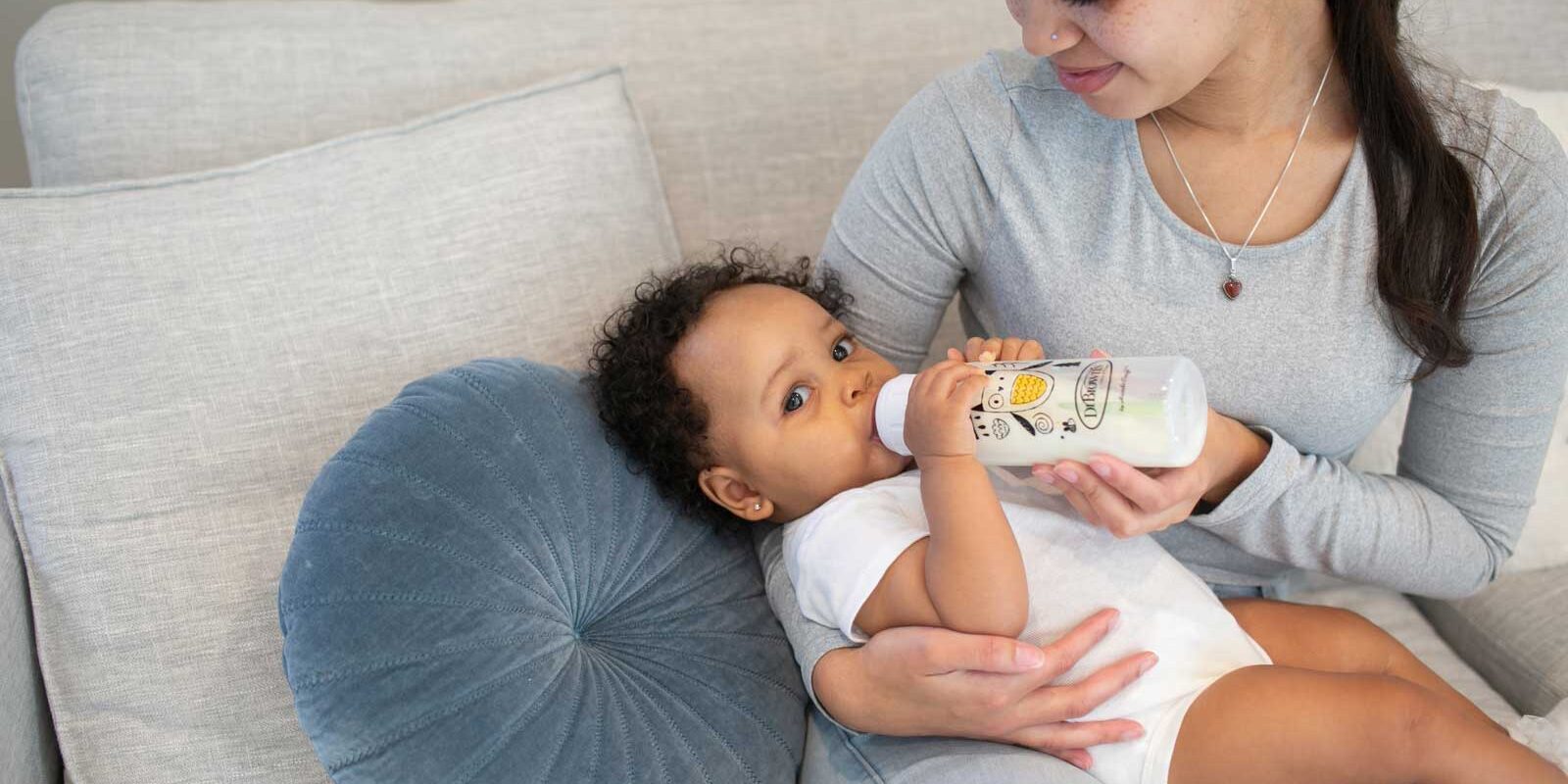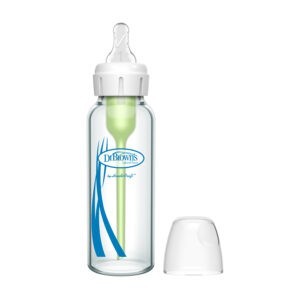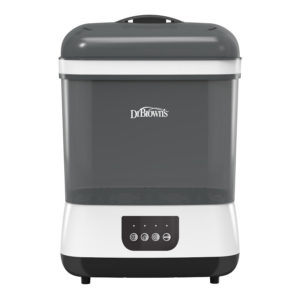Getting ready for your baby’s arrival can be overwhelming. The list of preparation to accomplish and products to buy before bringing a baby home is a long one.
If you’re like most parents, you probably have a lot of questions about what products you absolutely need to have on hand for your baby. As a pediatrician, I always joke that all you really need are items that cover the “holy trinity” of newborns…EAT, SLEEP and POOP. The rest will fall into place.
Today, I want to offer pediatrician tips to help you master the first newborn necessity: eating.
A Must-Have for Feeding Your Newborn
Even if you have decided to exclusively breastfeed your new bundle, there may be times when your partner or another caregiver may help with feedings. Having the right bottles at home is important for any new parent, whether you’re exclusively breastfeeding, pumping, formula feeding—or any combination of the three.
Using bottles for the first time can seem confusing, so understanding the features of a bottle can help you pick the one that will be best for your baby.
1. Bottle Shapes
When looking at different bottles, you will notice that they often come in different shapes. Typically, a bottle will be narrow, wide or angled.
- Narrow and tall is the most common bottle shape you’ll see.
- Wide bottles are designed to hold wide, short bottle nipples.
- Angled bottles are bent near the bottle’s “neck.”
2. Nipple Flow
Choosing the right bottle nipple is an often tricky, but important, step. The wrong flow speed from a nipple can lead to overfeeding, reflux and indigestion. Further, a flow speed that is too fast for a baby can disrupt the coordination of their suck-swallow-breathe feeding sequence.
Most bottle brands will offer a range of nipple sizes and flow options that can match your baby’s specific stage of feeding. For example, a newborn nipple will create a slower flow to prevent overfeeding and gas.
As your baby grows, however, look for cues that they need a faster-flowing nipple. Signs may include increased fussiness, longer feeding times and sleeping during feeds. Remember, each baby is different, and feeding styles will vary. If you have any concerns or questions about bottle flow, consult your pediatrician.
Pediatrician’s Note: If you are both breastfeeding and bottle feeding, Dr. Brown’s® Anti-Colic Options+™ Baby Bottles are engineered to encourage a proper latch and maintain a consistent flow, leading to a feeding experience that most closely mimics the natural breast.
3. Extra Features
Many newborns and infants experience gas or colic, which can be extremely upsetting for both parents and babies. I encourage new parents to be proactive by investing in a bottle that can help prevent or eliminate the gas that can aggravate their baby’s crying spells.
Pediatrician’s Note: I have always recommended Dr. Brown’s® Anti-Colic Options+™ Baby Bottles to soon-to-be and new parents. These bottles have an internal system that routes the air through a vent within the bottle. This system bypasses the milk to help reduce the air bubble oxidation that can cause gas. Your baby receives all the good vitamins in the milk, without the extra air that can cause tummy issues and discomfort.
While having the right bottle is important in preventing gas, I have some extra tips to help with colic in babies:
- Decrease sensory stimulation. Crying tends to worsen when colicky babies are in overstimulated environments. Try turning off the TV, dimming the lights, and turning on white noise or light music.
- Swaddle your baby. The tightly-held feeling mimics their time in the womb. Baby-wearing can also make infants feel this comforting sensation of being held closely and securely.
- Regular motion, like rocking back and forth, can be soothing to colicky babies.
- Know your baby’s hunger cues and feed them before they start to cry. Crying can force additional air into a baby’s stomach, making them gassier and fussier.
4. Bottle Material
Baby bottles are made from many different materials, including plastic, glass, silicone and even stainless steel. This one is a personal choice as each material has its own benefits and drawbacks.
When shopping for a bottle, look for a BPA-free material, which will be the safest for your baby.
5. Bottle Size
By the time you head home from the hospital with your newborn, they will likely be eating only around 0.5 to 1 ounce of milk or formula at each feeding. Because your baby’s tummy is so small at birth, start with a smaller sized bottle—one that holds 4 ounces. As your baby grows and needs more milk or formula at each feeding, switch to a larger size—usually 8 ounces—to better fit their feeding needs.
6. Cleaning Bottles & Nipples
Clean any new bottles with soap and water before using them to feed your baby.
Baby bottles and nipples should also be cleaned after each feeding to prevent any bacteria from building up in the bottles. You can also sanitize bottles and nipples in the dishwasher, or use a bottle sterilizer, on a regular basis.
Extra Tips for Choosing the Best Baby Bottle
Tip #1: Stock your cabinet with more than one type of bottle before your baby is born. It may take some trial and error to determine what works best for you and your baby.
Tip #2: If you’re breastfeeding but know you also want to use a bottle at times, the timing of first introducing the bottle is important. Before using a bottle, make sure your baby is effectively breastfeeding. Bottle-feeding requires less effort on your baby’s part, so some babies may develop a preference to the bottle if it is introduced too early in their feeding development. On average, a good time to introduce a bottle to an exclusively breastfed baby occurs around age three weeks, when baby is appropriately latching and breastfeeding without any issues.
Pediatrician’s Note: When introducing a bottle to a breast-fed baby, I always recommend starting with a slower flow nipple, no matter the baby’s age, allowing for a similar flow to breastfeeding.
Tip #3: If you are considering bottle feeding your second or third child, I highly recommend investing in new bottles versus reusing the ones you used with your first child. Some bottles are bound to get grimy in storage, and bottle technology and safety features are constantly changing.
Tip #4: Ask friends and family members which bottles work best for them. While your baby will eventually decide which bottle they like the most, it will not hurt to seek suggestions from friends and family.
Final Thoughts on Finding the Right Bottle for Your Baby
I hope this information will help guide you in the right direction and help you feel more confident in choosing the bottle that will work best for your baby. Remember, your baby will ultimately choose the bottle they prefer, so don’t stress—you’re here to set them up for success!
About the author:
Dr. Katie Friedman is a board-certified pediatrician, writer, spokesperson, and mother. Dr. Friedman completed her residency at Jackson Memorial Hospital at the University of Miami. She currently practices pediatric emergency medicine in South Florida. She divides most of her working hours between the emergency room and the blog she created with her sisters, ForeverFreckled.com, where she serves as an educator and spokesperson.
Using her passion for preventive medicine and pediatric safety, Dr. Friedman has worked alongside several brands and companies, to guide parents through obstacles of childhood safety, illness prevention, and pediatric medicine. In addition to her hospital work and writing obligations, she also serves as a medical correspondent for Lifetime’s Access Health and The Balancing Act. In her free time, Dr. Friedman loves spending time with her family, traveling, and early morning runs.


